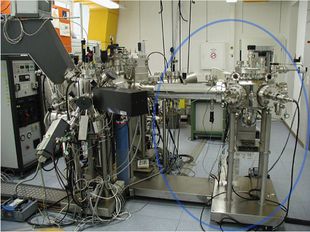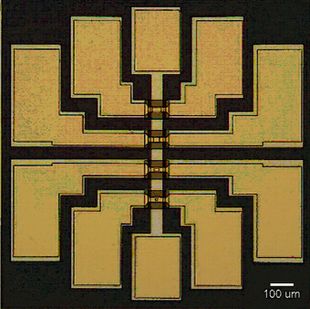Oxide nanoengineering
The interest in oxides is increasing continuously due their promising physical properties. Examples are high temperature superconductivity, ferroelectricity, half-metallicity, or non-linear optical behavior. The combination of these properties in complex oxide heterostructures is of particular interest, since it allows for the combination of different physical properties in new functional thin film systems and device structures. The fabrication of such layer systems requires the control of the individual layers and the engineering of the interfaces between them on a nanometer scale.
The Walther-Meissner-Institute has established a UHV laser molecular beam epitaxy (L-MBE) system for the controlled growth of complex oxide heterostructures with individual layers in the nm regime. The L-MBE systems allows for the growth of oxide heterostructures with in-situ RHEED control, AFM/STM analysis as well as metallization. A particular goal is the combination of different magnetic oxides (e.g. manganites, cuprates, half-metallic double perovskites, Co- or Mn doped ZnO) in complex heterostructures in order to engineer the spin structure on a nm scale and achieve novel magnetic properties. Oxide heterostructures also provide the basis for devices such as magnetoresistive sensors, magnetic tunnel junctions or spin injectors, which are basic elements of spintronic devices.

